Search results for “delaware river basin”
The short answer is no. Rebuilding salmon and steelhead populations will require increasing the number of adults that return to spawn relative to the number of juveniles that migrate to the ocean. This is known as the smolt-to-adult ratio, or SAR. However, in the past 25 years, salmon and steelhead SARs have failed to reach 2…
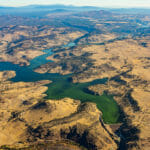
Oregon’s Rogue, Umpqua, and Klamath Rivers are iconic and prized by anglers from across the country for their native trout and salmon. In recent years TU and our partners have made dramatic progress removing fish passage barriers, including major dams, and restoring instream fish habitat. Unfortunately, poor water quality and lack of instream flow due…
CONTACT: Joanna NasarWestern Resource Advocates(720) 763-3728joanna.nasar@westernresources.org Cory ToyeTrout Unlimited(307) 399-4623 (c)ctoye@tu.org Cheyenne, Wyo. (Dec. 11, 2013) A new report , examining one of the most important issues in the West water supply and demand shows that Wyoming is well-prepared for the future. The state will be able to more than meet the needs of residents…

By Charlie Schneider Emerging science can meld with policy and restoration efforts to help reach our ultimate goal of improving steelhead runs. A previous post at Wild Steelheaders United highlighted the petition to list summer steelhead on the Eel River in Northern California, and discussed research by scientists at UC Davis that suggests premature migration…
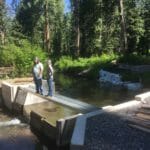
The Klamath River is the third most productive watershed for salmon and steelhead on the West Coast. The Klamath and Eel Rivers are legendary for their salmon and steelhead runs. But these famous fisheries have been hard hit by dams, diversions, and in recent years extreme drought. TU is at the forefront of efforts to…
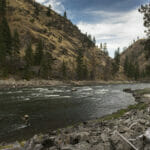
FOR IMMEDIATE RELEASE February 7, 2021 Contacts: Chris Wood, President and CEO, Trout Unlimited, chris.wood@tu.org Rob Masonis, VP for Western Conservation, Trout Unlimited, rmasonis@tu.org Greg McReynolds, Snake River campaign director, Trout Unlimited, gmcreynolds@tu.org Comprehensive proposal would remove four lower Snake River dams and invest in the Northwest region’s energy, transportation, and agricultural infrastructure BOISE, Idaho.—U.S. Rep. Mike Simpson…
The Western Water and Habitat Program is Trout Unlimited’s largest conservation effort. The program, which evolved from water policy and habitat restoration roots over the past 20 years, now offers some of the largest geographic conservation coverage by a non-profit organization in the West. It combines law, policy, and on-the-ground restoration projects with benefits to…
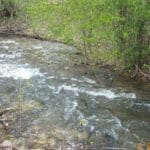
Roaring Creek is a critical perennial tributary in the Lower Entiat River, Upper Columbia Sub-Basin, in Washington. Trout Unlimited aims to improve production of listed steelhead and bull trout in the Entiat basin, and the Roaring Creek Project has multiple objectives to further this goal. Roaring Creek is currently one of the few productive tributaries…
In our last post we explored how TU’s work on the ground is helping to change the conversation around water storage and how the use of “natural storage” increases water security for agriculture, people, and the environment. In this post, we’ll talk about how TU works with federal agencies to ensure that the projects they…

The first time I saw the Eel River flowing under the remote redwood forest along Humboldt County’s Avenue of the Giants, I saw a dirty, blown-out river that the locals swore to me was home to massive steelhead. I lived in the small city of Eureka for a couple of years in the late 90s,…

Long-awaited report shows that replacing the dams’ benefits is possible. Change in the Snake basin is inevitable.
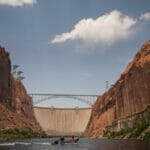
We just released an issue of TROUT magazine that focuses most of its 100 pages on the need to remove four dams from the Lower Snake River. That was an easy call for me as editor because I think removal of the Lower Snake dams, thus giving a huge percentage of steelhead and salmon in the…
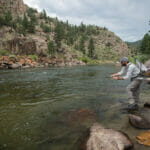
The proposed Uinta Basin Railway poses a significant threat to Colorado River’s Gold Medal waters.
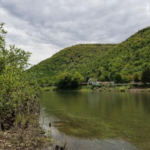
By Shawn Rummel The West Branch Susquehanna drains an area of approximately 7,000 squares miles in north-central Pennsylvania, a watershed that’s double the size of Yellowstone National Park. Due to the large amount of public land in the basin —more than one-third is state forest, state park, or state game lands — it is a tremendous…
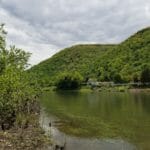
By Shawn Rummel The West Branch Susquehanna drains an area of approximately 7,000 squares miles in north-central Pennsylvania, a watershed that’s double the size of Yellowstone National Park. Due to the large amount of public land in the basin —more than one-third is state forest, state park, or state game lands — it is a tremendous resource for outdoor recreation.…

By Shawn Rummel The West Branch Susquehanna drains an area of approximately 7,000 squares miles in north-central Pennsylvania, a watershed that’s double the size of Yellowstone National Park. Due to the large amount of public land in the basin —more than one-third is state forest, state park, or state game lands — it is a tremendous…
Photo/Havey Productions For Immediate Release June 22, 2018 Contact: Scott Yates, syates@tu.org, (307) 349-0753 Randy Scholfield, TU communications, rscholfield@tu.org, (720) 375-3961 Trout Unlimited: System Conservation part of the solution for bolstering Colorado River flows, water supplies Ranchers, farmers embraced conservation measures under innovative program (Denver) Trout Unlimited today issued a statement regarding the Upper Colorado…

By Chris Wood Walt shook his head. “It’s up to you man, but I wouldn’t use a streamer. There’s a ton of wood and other snags in the river through the park. But it’s your call.” At the put-in, another guide commented, “I had two really good streamer fishermen hit the same stretch yesterday, and…
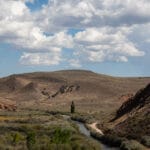
In 2019, the Inland Trout Program of Trout Unlimited set out to improve and restore fish habitat near “the Elbow”, a renowned fishing access area included in the new state park. Utilizing both biogenic floodplain features and rock j-hook structures















